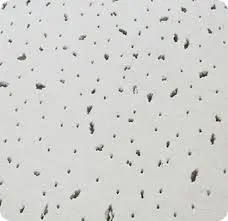Nov . 10, 2024 12:15 Back to list
Ceiling Access Panel for Suspended Ceilings Installation and Maintenance Guide
Understanding Suspended Ceiling Access Panels
Suspended ceiling access panels play a crucial role in modern construction and interior design, providing both functionality and aesthetic appeal. These panels are designed to be integrated into suspended ceilings, allowing easy access to the space above. This space is often utilized for utilities such as electrical wiring, plumbing, and HVAC systems. In this article, we will delve into the features, benefits, installation processes, and considerations involved in using suspended ceiling access panels.
Features of Suspended Ceiling Access Panels
Suspended ceiling access panels are available in various designs, materials, and sizes to cater to different needs and environments. Common materials include metal, plastic, and gypsum board. Each material boasts unique attributes, such as durability, fire resistance, and ease of maintenance. The panels can be painted or finished to blend seamlessly with the ceiling or to match the overall aesthetic of the room.
One of the primary features of these access panels is their ability to provide a clean and unobtrusive means of accessing the ceiling void. They are designed to maintain the integrity of the ceiling's appearance while still allowing for service and maintenance access. Many panels come equipped with locking mechanisms to ensure that they can be securely shut and remain hidden from view.
Benefits of Using Access Panels
The benefits of installing suspended ceiling access panels are numerous
. Firstly, they provide important access points to essential systems without the need to remove entire sections of the ceiling. This is particularly advantageous in commercial settings where maintenance may be regular and where specific areas often require inspections.Furthermore, access panels can save both time and money in building maintenance. By allowing easy inspection and repair of plumbing, electrical, or HVAC systems, businesses can reduce downtime and prevent costly mistakes caused by inaccessible utilities.
Moreover, the aesthetic aspect of these panels should not be overlooked. They enhance the professional appearance of a building, creating a clean, cohesive look. When panels are well-installed and painted to match the ceiling, they become virtually invisible, maintaining the design integrity of the space.
suspended ceiling access panel

Installation Process
Installing suspended ceiling access panels is typically straightforward, especially in environments where the ceiling grid is already in place. The installation process involves precisely measuring the area where the panel will be located. Once measured, the installer will cut the grid to accommodate the access panel, ensuring the edges are smooth to avoid any interference with the panel's fittings.
Once the grid has been prepared, the access panel is inserted and secured in place. Some panels are designed for easy removal while still providing a sturdy support structure, making them convenient for both installation and future maintenance.
It is crucial to follow the manufacturer’s guidelines during installation to ensure that the panel maintains its structural integrity and aesthetics. Additionally, if the panel will be used in a fire-rated ceiling, specific guidelines must be followed to ensure compliance with local fire safety regulations.
Considerations
When selecting suspended ceiling access panels, several considerations should be taken into account. These include the specific needs for access frequency, the types of utilities that will be serviced, and any local building codes or regulations.
Furthermore, it is essential to determine the size and location of access points in relation to the systems they need to service. This planning ensures that maintenance personnel can access utilities efficiently and safely without disrupting other elements of the ceiling or the overall building structure.
In conclusion, suspended ceiling access panels offer a practical solution for accessing overhead utilities while maintaining a polished appearance. Their ease of installation, coupled with their numerous benefits, makes them an essential component in modern construction. By understanding their features, benefits, and installation processes, designers, builders, and property owners can make informed decisions that will enhance the functionality and aesthetics of their spaces.
-
Durable Ceiling T Grid Systems | Easy InstallationNewsAug.29,2025
-
PVC Gypsum Ceiling: Durable, Laminated Tiles for Modern SpacesNewsAug.28,2025
-
Pvc Gypsum Ceiling Is DurableNewsAug.21,2025
-
Mineral Fiber Board Is DurableNewsAug.21,2025
-
Ceiling Tile Clip Reusable DesignNewsAug.21,2025
-
Ceiling T Grid Modular DesignNewsAug.21,2025







